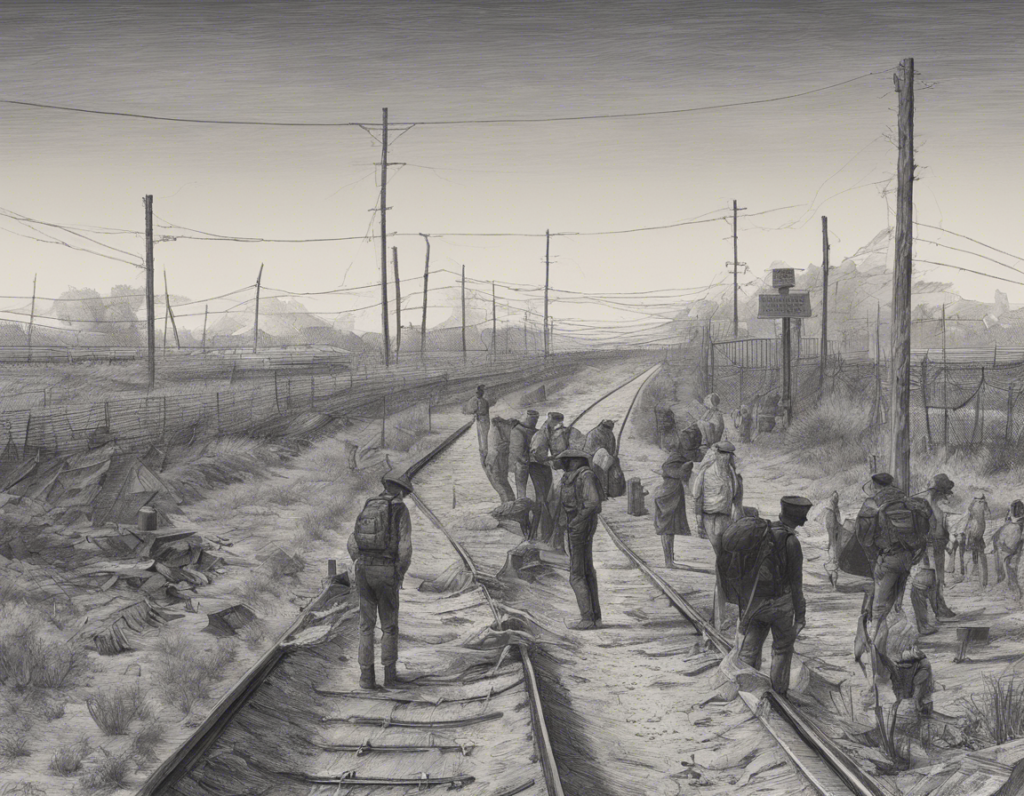
The ongoing border crisis in the United States has sparked nationwide concern and heated debate. With a surge in migrants arriving at the southern border seeking asylum and a lack of capacity to process and accommodate them, the situation has become a focal point of political discourse and humanitarian efforts. Understanding the complexities of this crisis is essential to finding sustainable solutions and addressing the underlying factors driving migration.
The root causes of the border crisis are multifaceted and interconnected, stemming from a combination of political instability, economic insecurity, violence, and environmental factors in migrants’ home countries. Countries in Central America, such as Honduras, Guatemala, and El Salvador, have been particularly affected by these issues, leading many to flee in search of safety and opportunity.
Political instability in many Central American countries has created social unrest and economic uncertainty, driving people to seek refuge elsewhere. Corruption, lack of government accountability, and ineffective governance have exacerbated these challenges, making it difficult for individuals to thrive in their home countries.
Economic insecurity is a significant driver of migration, as many individuals and families struggle to meet their basic needs due to poverty and limited job opportunities. The lack of economic prospects in their home countries compels many to seek better lives in the United States, where they believe they can find work and support their families.
Violence, including gang activity and criminal organizations, poses a serious threat to many individuals in Central America, especially women and children. The pervasive fear of violence and insecurity has led numerous families to flee their homes in search of safety and protection.
Environmental factors, such as drought, flooding, and natural disasters, have also played a role in driving migration from Central America. Climate change has exacerbated these challenges, leading to food insecurity and displacement as people are forced to leave their homes in search of a more sustainable environment.
The influx of migrants arriving at the southern border has overwhelmed border enforcement agencies and strained resources, leading to challenges in processing and accommodating individuals seeking asylum. The lack of capacity to handle such a large number of arrivals has exacerbated tensions and highlighted the need for comprehensive and long-term solutions.
Processing backlogs have become a significant issue at the border, with many individuals waiting weeks or even months for their asylum claims to be heard. The bottleneck in processing has resulted in crowded detention centers and inadequate living conditions for migrants, raising concerns about human rights violations.
The lack of infrastructure and resources to accommodate the influx of migrants has strained border facilities and led to overcrowding. The inadequate housing and healthcare options for migrants have exacerbated vulnerabilities and created health risks, particularly in the context of the COVID-19 pandemic.
Legal challenges related to asylum and immigration policies have contributed to the complexity of the border crisis. Changes in regulations and enforcement practices have affected how migrants are processed and their eligibility for asylum, leading to confusion and uncertainty for those seeking protection.
Addressing the border crisis requires a comprehensive and multifaceted approach that acknowledges the complexity of the issues at hand. From short-term relief efforts to long-term policy changes, various strategies can be implemented to improve conditions at the border and address the root causes of migration.
Enhancing processing capacities at the border is critical to expediting the asylum claims process and alleviating backlogs. Investing in additional staff, technology, and resources can help streamline procedures and ensure that individuals are treated humanely and efficiently.
Strengthening regional partnerships with countries in Central America is vital to addressing the root causes of migration. By promoting economic development, governance reforms, and security initiatives, the United States can help create stability and opportunities for people in migrant source countries.
Improving refugee resettlement programs and expanding legal pathways for migration can provide safe and dignified options for individuals seeking asylum. By strengthening the asylum system and ensuring that protections are in place for vulnerable populations, the United States can demonstrate its commitment to human rights and compassion.
The surge in migrants at the southern border is driven by a combination of political instability, economic insecurity, violence, and environmental factors in countries like Honduras, Guatemala, and El Salvador.
Border enforcement agencies are facing challenges in processing and accommodating the increasing number of arrivals, leading to overcrowded detention centers and processing backlogs.
Addressing the root causes of migration requires comprehensive strategies, including enhancing processing capacities, strengthening regional partnerships, and improving refugee resettlement programs.
Processing backlogs create delays in asylum claims processing, leading to crowded detention centers and inadequate living conditions for migrants, raising concerns about human rights violations.
The United States can enhance processing capacities, strengthen regional partnerships, and improve refugee resettlement programs to address the border crisis and create sustainable solutions for migrants seeking asylum.